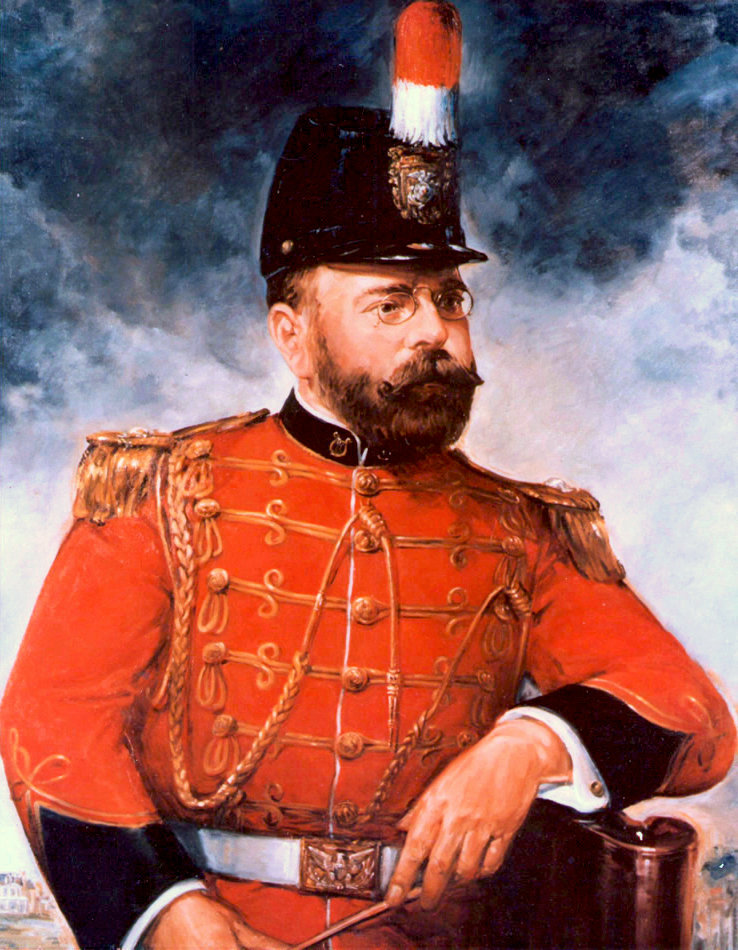John Philip Sousa
The Romantic Period
United States Marine Band, Public domain, via Wikimedia Commons
A native of Washington D.C., John Philip Sousa was the third of ten children born to a Spanish father and a German mother. His father was a trombone player in the United States Marine Band. Sousa learned to play the violin at an early age. After finding out he was literally planning to run away and join the circus, father got him an apprenticeship with the Marine Band.
His internship ended in 1875, and he took a job with a theatre orchestra. In 1879, he conducted Gilbert and Sullivan's "H.M.S. Pinafore" in Philadelphia, where he also met and married his wife Jane. He wrote an opera called "Our Flirtations" and took it on tour, but was offered a job as conductor of the Marine Band, which he accepted.
Among his first acts as conductor were to get the band new uniforms, new repertoire, and higher salaries (he got his own salary as conductor all the way up to $1500/year!) His first performance with the band was a New Years' Day 1881 reception at the White House. In contrast to the band's generally loud style of playing, Sousa kept the group soft, focusing on balance and blend. President Rutherford B. Hayes found Sousa to personally let him know what an improvement this was.
After the assassination of President James Garfield later that year, Sousa had some time to compose new music during the period of national mourning when the band was not needed. His first march to become a hit was "The Gladiator." President Chester A. Arthur told Sousa that he did not like the song "Hail to the Chief," traditionally played when the President enters a room, so Sousa composed a polonaise.
Sousa's output over the next decade was prolific, with most of his compositions falling under a relatively standard march form:
| Introduction | A brief and energetic introduction. Chromaticism is common here as the key is established. |
| First Strain | This is the first of three "strains," or verses, each with a different melody. It is often played soft the first time and loud the second time. |
| Second Strain | The second verse of the march. |
| Trio | The "trio" usually refers to thinning of the texture to three parts, creating a concertino within the ensemble. The trio is usually very soft. There is almost always a key change here, moving up a fourth. |
| Third Strain | The third strain is often in binary form with a fanfare introduction and then a main melody, which is usually performed soft the first time and strong the second time. |
Marches often end with a repetition of the final chord, called a "stinger."
Sousa resigned from the Marine Band on August 1, 1892 and founded the Sousa Band (quadrupling his salary to $6000/year), which toured the world, performing a concert every day for the next forty years. This tour included a parade through the Arc du Triomphe in Paris and a private concert for the British royal family. He also wrote and published several short novels, including The Fifth String (1902) and The Transit of Venus (1920).
In 1917, Sousa was commissioned into the Navy as a lieutenant to lead the Navy Band. He donated almost his entire salary to veteran's charities.
Sousa received various honors, especially in his later years, including a Royal Victorian Medal from King Edward VII, a formal promotion to lieutenant commander in the Navy and honorary memberships in the ΚΚΨ and ΦΜΑ music fraternities. Sousa died of heart failure in 1932 while visiting Pennsylvania. His marches remain iconic standards of American music.
